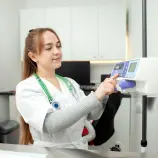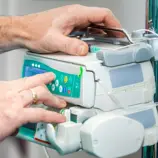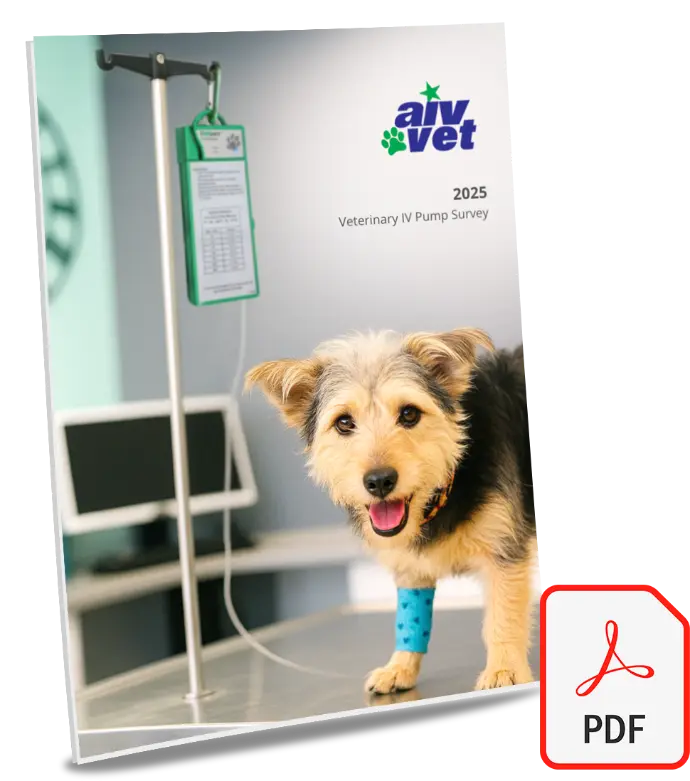According to our 2025 Vet Industry Survey (which you can download here) 94% of veterinarians say cost is a critical factor when buying infusion pumps.
Yet everyone wants equipment that won't fail during a critical case or make the team look unprofessional in front of clients.
You're caught between wanting reliable gear and watching every dollar.
Let's break down the real numbers behind an investment in CRI pumps.
Not the marketing fluff, but actual depreciation curves, visit volumes, and payback periods that determine whether patient-ready (refurbished) equipment or brand-new pumps make financial sense for your practice.
The depreciation reality no one talks about
New infusion pumps follow a predictable depreciation curve that would make any accountant wince. Like a car losing a huge chunk of value the moment it drives off the dealership lot.
Year one typically sees 25-30% value loss, followed by 10-15% annually. That $3,500 pump is worth about $2,400 after twelve months of use.
Patient-ready equipment has already absorbed this depreciation hit. You're buying at the bottom of the curve, not the peak.
Here's the math - a five-year-old refurbished pump that originally cost $3,500 now sells for around $1,000. It delivers the same fluid accuracy, the same process benefits to your workplace, and often comes with the same warranty coverage as buying new.
The depreciation difference alone can fund an entire backup unit.
Visit volume math that actually matters
Let's run real numbers for different practice sizes, because your decision should depend on how much you actually use these pumps.
Small practice scenario
|
|
|
The math gets even more interesting when you factor in that 97% of practitioners experience recurring issues with their current pumps.
Equipment failures happen regardless of age - it's about maintenance and parts availability + cost, not whether you bought new or patient-ready.
The hidden costs that flip the equation
Everyone focuses on the sticker price, but the real cost drivers hide in the details.

Opportunity cost of waiting
If budget constraints delay your purchase by six months, you're losing efficiency and potentially risking equipment failures during that time. The cost of delayed care from pump sharing between rooms adds up fast, especially when 60% of practices struggle with patient volume spikes.

Parts availability and service accessibility matter most
Our survey found 89% of veterinarians value warranties and service agreements that reduce downtime. A patient-ready pump an easy parts pipeline and easy access to responsive service often provides better coverage than a flagship model that has to run through the manufacturer.

Staff confidence affects everything
When your team trusts their equipment, they work faster and make fewer errors. Age matters less than reliability..
When patient-ready wins (and when it doesn't)
Patient-ready equipment makes the most financial sense when:
You’re a clinic owner outside of the large corporate franchises.
Your weekly pump usage exceeds 10 procedures.
Budget constraints would otherwise delay the purchase.
You need multiple units and want consistent interfaces.
Your current equipment has recurring reliability issues.
New equipment makes sense when:
You're expanding into specialized procedures requiring a specific new feature.
Latest programmability features directly impact your treatment protocols.
You have a very high volume of fluid delivery procedures annually.
Real payback scenarios
Let's run real numbers for different practice sizes, because your decision should depend on how much you actually use these pumps.
Small practice scenario
| Medium practice scenario
| High-volume practice
|
These calculations assume modest efficiency gains from reliable equipment - reduced procedure delays, fewer equipment swaps mid-treatment, and decreased staff stress during busy periods.
Your decision framework
Before your next infusion pump purchase, ask these questions:
How many pump procedures do we perform weekly?
How many pump procedures could we perform weekly with more capacity?
What's our current equipment failure rate costing in delays and rescheduling?
Do we need the latest programmability features, or just reliable fluid delivery?
Would buying patient-ready allow us to purchase backup units within the same budget?
What service coverage/risk comes with each option?
The 80% of veterinarians who agree that pump upgrades improve patient outcomes aren't necessarily buying new - they're buying reliable.
This is the right time to be responsible
Patient-ready infusion pumps often deliver better ROI for most companion animal practices. The depreciation advantage, combined with similar reliability when properly refurbished, creates payback periods that make the CFO part of your brain happy.
Your equipment decisions should be based on utilization rates, service coverage, and cash flow - not whether something rolled off the factory line last month or six years ago.
The key is buying from a partner who stands behind its patient-ready equipment with real warranties and responsive service. Because whether it's new or refurbished, downtime costs you money and credibility.

Want more data-driven insights for your practice decisions?
Download our complete veterinary infusion pump survey report for additional statistics and analysis that can help make your practice more profitable.
Over 100 veterinarians shared their real experiences with equipment costs, reliability challenges, and purchasing decisions.